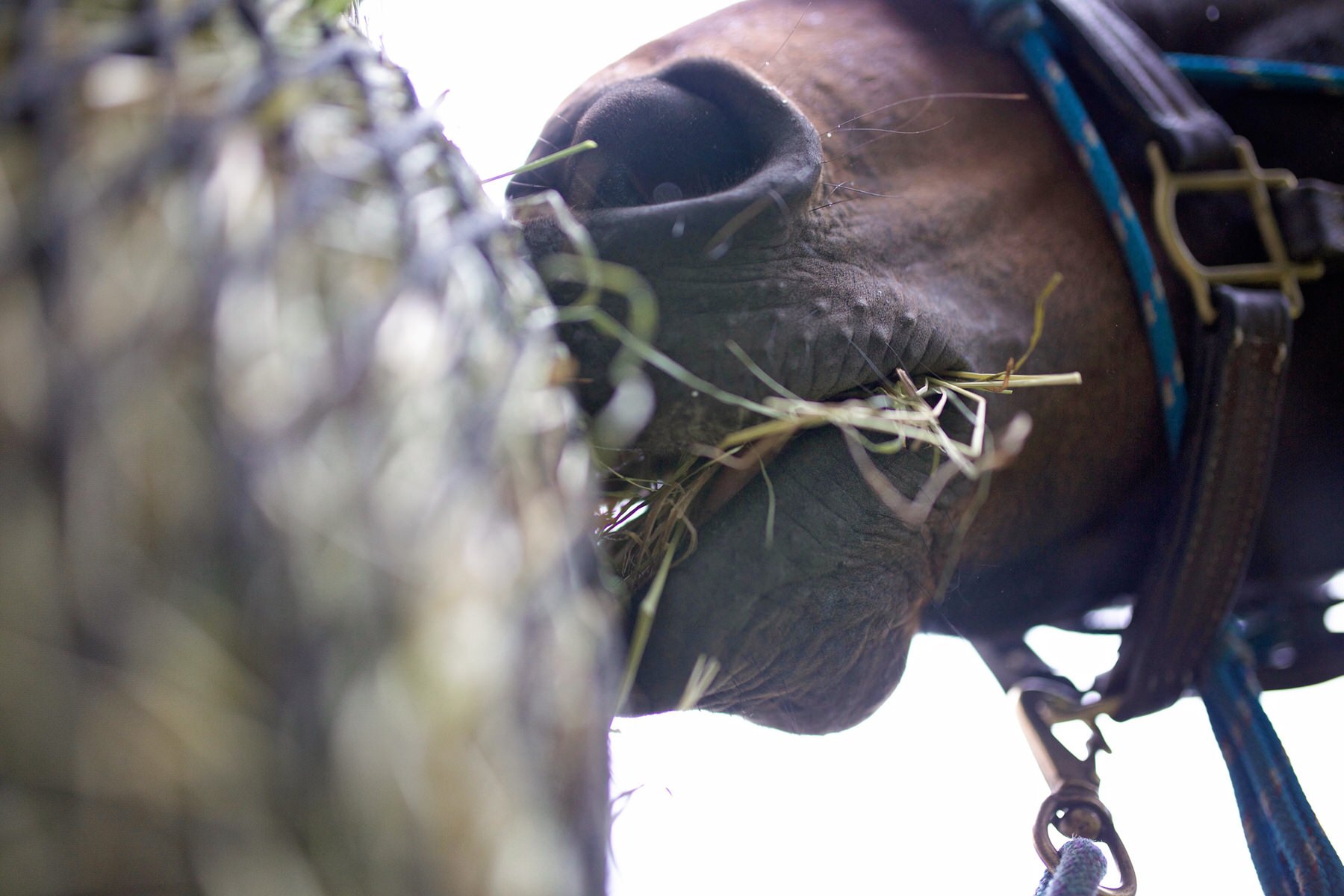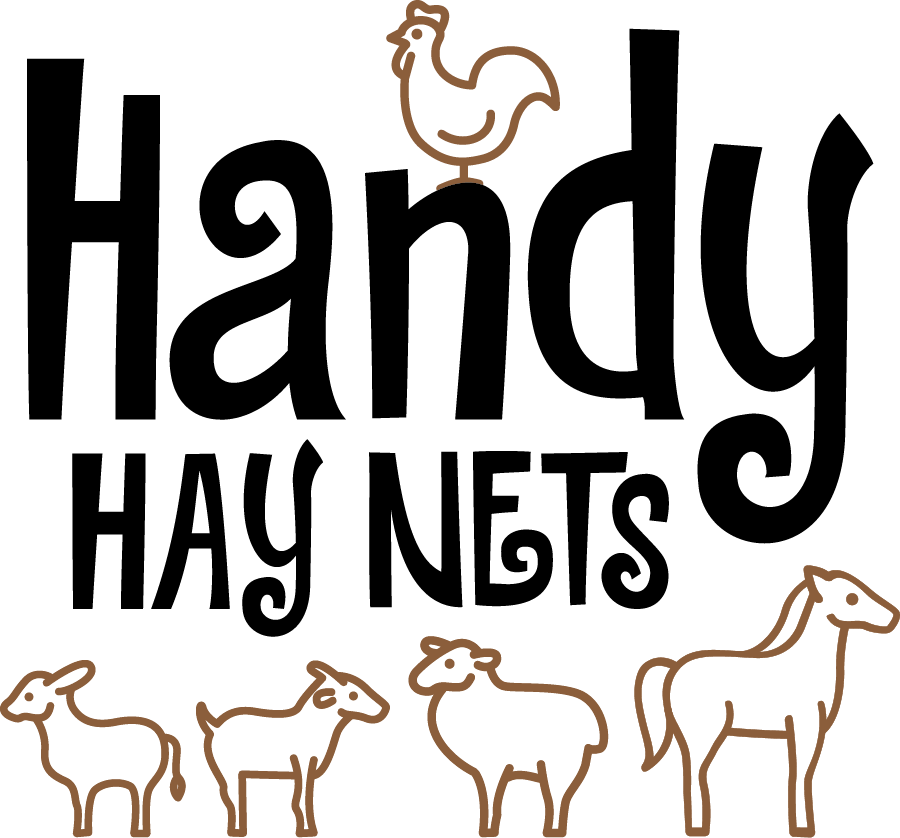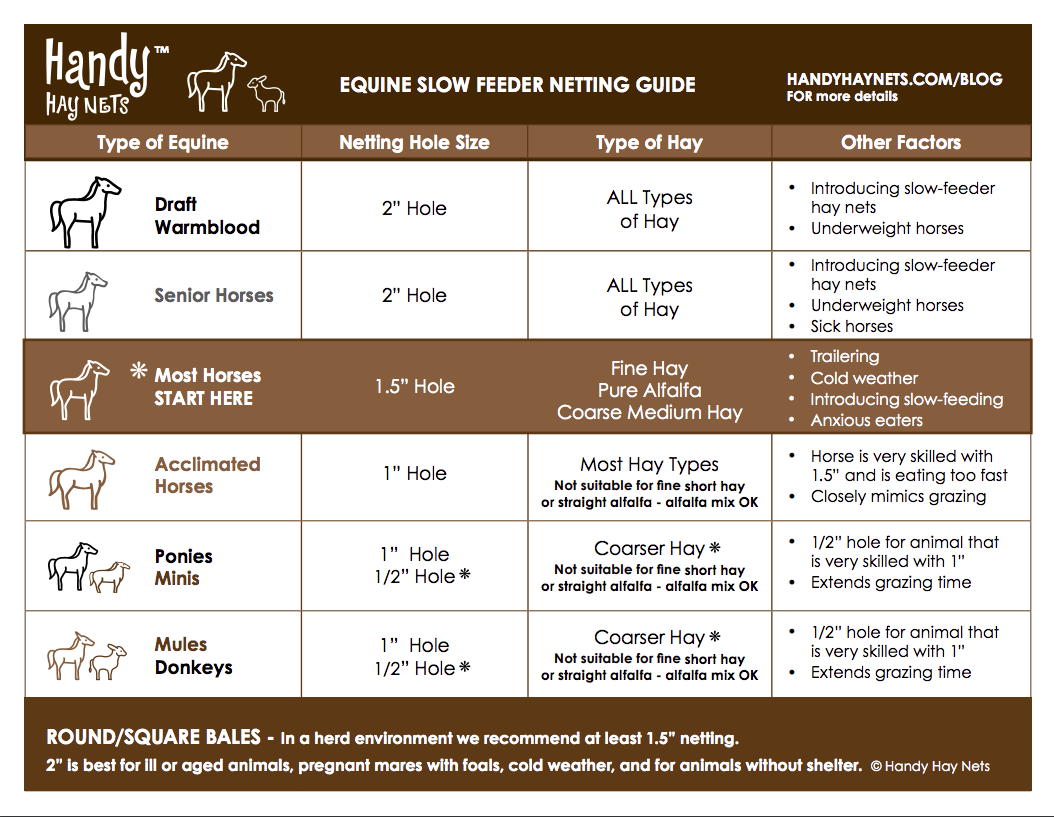
Getting Started with
Slow Feeding for Horses
Horses are grazing animals, and by nature, they are designed to eat small amounts and be on the move 18-20 hours a day. Unlimited access to forage at all times is best, but most horses have lost the ability to maintain a healthy weight because they are often kept in small areas and don't move enough. Introducing a slow feeder for horses can help simulate their natural grazing behavior, encouraging them to eat more slowly and providing them with mental stimulation as they work to access their food.
To live with us, horses must succumb to the unnatural effects of confinement and human imposed lifestyles. Horses are therefore dependant on their humans for their needs for both food and exercise. In doing so, we have altered their natural rhythms. Slow feeding with Handy Hay Nets can help restore these rhythms and allow horses to buffer stomach acid to prevent ulcers and provide a steady stream of energy (trickle feeding). This means you can ride, train or play at ANY time!
Handy Hay Nets - Getting started guide.
Download the pdf of this guide here and keep a copy out at the barn.
When you first introduce animals to slow feeder hay bags, make sure there is loose hay available as well. Never feed a hay bag if your animal is hungry as this will cause stress. We recommend you feed 3/4 of what you would normally feed in addition to the hay bag to start.
It can take anywhere from a week to a month for animals to really get the hang of eating from our hay nets, but most people find that when they do, they prefer their bags to the loose hay!
Hungry animals will often paw or bite through the netting. As they adjust, they use their teeth and lips to pull the hay through the holes.
Don’t pack the bag too tight or they won't be able to get the hay out. Pull some hay through the netting to help them get the idea.
Quick drops in temperature and very cold weather can require your animals to need additional loose hay.
Don’t let your Handy Hay Net run out. Hay becomes harder to get out as the bag empties due to all the broken bits. Empty them out so your animals can clean it up.
Trickle Feeding means having a constant supply of forage available at all times. Trust that your animals will adjust over time and settle into a balanced weight.
Ensure your slow feeder for horses is consistently filled to avoid frustration and maximize its effectiveness. Trickle feeding with a slow feeder ensures your equine companions have a steady supply of forage, promoting natural grazing behaviors and supporting their overall well-being.
If your horse is shod please make sure that they do not contact the net at any time. Put it in a bin or feeder or hang it so they cannot paw it. Watch some videos.
We have supported many owners during this process so feel free to contact us with your questions or concerns.
Equine Slow Feeder Netting Guide
Set yourself up for success!
We highly recommend you take some time to read these 3 blog posts before you purchase.
When it comes to caring for horses — we believe that an open and curious mind will take you far.
Dr. Juliet M. Getty PHD
We love this article bringing back the horse's instincts! Dr. Getty’s website is a gold-mine of equine nutrition and health articles.









